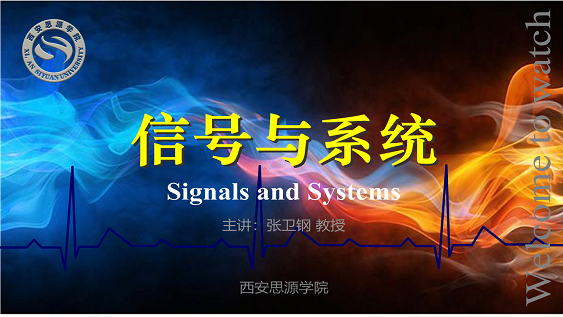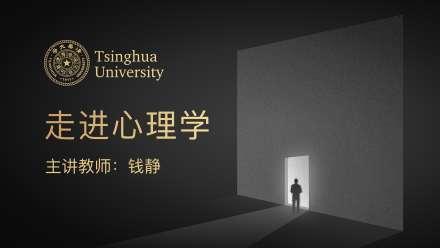
当前课程知识点:走进心理学 > 三、 Sensation and Perception > 3.8 Auditory Perception > Video
接下来我们谈谈听觉
声波在空气中压缩和膨胀
它们传入我们的耳朵
转变为神经信号后由我们的大脑处理
让我们先看一下耳朵的结构
我们的耳朵有三个部分 外耳 中耳和内耳
声波穿过耳朵
声波穿过耳道
从外耳到中耳
我们的耳膜在中耳
外耳收集声音并把它送到耳鼓里
中耳耳鼓和耳蜗之间有一个腔
包含三个小骨头
锤骨 砧骨和镫骨
这些骨头集中振动
敲打着耳蜗上方的耳鼓
内耳是耳朵最深处的部分
包含耳蜗的半规管和前庭
让我们看看耳蜗
耳蜗是内耳中的一种盘状的 骨化的 充满液体的管子
将声音振动转化为听觉信号
你可以看到排列在耳蜗后部的
听觉神经
他们收集来自耳蜗的物理刺激
转化成神经信号
由颞叶的听觉皮层分析
就声音来说 实际上有两个维度
其中一个叫做强度
也就是声音的响度
声音的强度和响度是声波中的能量
由振幅决定
32
与感知的响度有关
振幅越大 声音越响
振幅越小 声音越轻柔
声音的响度也可以用分贝来衡量
让我告诉你测量绝对阈值的方法
使用不同强度的声音
我们可以测量听觉的绝对阈值
能让50%的人
听到任何声音的声音强度是零分贝
结合声音响度 我们可以测量不同的声音
并赋予它分贝数
一般的对话大约是60分贝
一个繁忙的街道转角大约是80分贝
一声响亮的雷声大约是120分贝
请大家注意 有一条很重要的分界线
大约是85分贝
85分贝以上的声音会对我们的耳朵造成损害
如果你暴露在
一个超过85分贝的环境中很长一段时间
你容易受伤
在我们的生活环境中有这样超过85分贝的地方
比如 一架喷气式飞机在500英尺处
或地铁在20英尺处产生的声音都是85分贝以上
这是很危险的
你可以看到在这种环境下工作的人
通常都戴着大耳机
但在我们的生活环境中最危险的地方
是摇滚乐队的演唱会
如果你坐或站在离摇滚乐队演唱会很近的距离
分贝数值可多达140
如果你不做任何保护
如果你长时间暴露在这样的环境中
比如一小时左右
那么你真的有听力受损的危险
所以不足为奇的是很多摇滚明星
很年轻就变聋了
另一个声音的维度叫做频率
也称为音调
这是由声音的波长决定的
波长越短 频率越高
音调越高 波长越长
频率越低 音调越低
我们如何对声音的方向进行定位
我们可以利用声波传播到
一个耳朵和另一个耳朵的时间差异 来确定声音的位置
我们把头部作为缓冲
我们人类可以探测到的最小时间差异
为1/100000秒 并以此为信息来定位声音
In term of localization of sound,
我们利用到达两个耳朵的声音强度信息
以及时间差异 来进行声音定位
视觉 听觉都是物理感觉
我们用眼睛或耳朵将物理刺激转化为神经信号
-1.1 What is behavior
--Video
-1.2 Topics in Psychology
--Video
-1.3 The story of the frontal lobe
--Video
-1.4 The history of psychology
--Video
-1.5 Schools of thoughts in Psychology
--Video
-Lesson 1作业
-2.1 The Origin of Brain Research
--Video
-2.2 Brain Structure
--Video
-2.3 Brain Facts,Brain Stem,Cerebellum and,The Limbic System
--Video
-2.4 Cerebral Cortex
--Video
-2.5 The Neuron and The Nervous System
--Video
-Lesson 2作业
-3.1 Color Vision
--Video
-3.2 Visual Illusions
--Video
-3.3 The Da Vinci Code
--Video
-3.4 Top-down Processing
--Video
-3.5 Perceptual Organization
--Video
-3.6 Innate and acquired ability in perception
--Video
-3.7 Adaptive nature of perception
--Video
-3.8 Auditory Perception
--Video
-3.9 Perceptions of Smell, Taste and other senses
--Video
-3.10 Summary of Sensation and Perception
--Video
-Lesson 3作业
-4.1 What is memory
--Video
-4.2 Attention and sensory memory
--Video
-4.3 Working memory
--Video
-4.4 Memory encoding and storage
--Video
-4.5 Long-term memory and contextual effects
--Video
-4.6 Why do people forget
--Video
-4.7 False memory
--Video
-4.8 Characteristics of memory
--Video
-4.9 Summary: A map of memory
--Video
-Lesson 4作业
-5.1 Overview of development over the life span
--Video
-5.2 Prenatal development
--Video
-5.3 Neonatal development
--Video
-5.4 Infancy:sensory and motor development
--Video
-5.5 Theory of attachment
--Video
-5.6 Language acquisition
--Video
-5.7 Emergence of knowledge
--Video
-5.8 Theory of mind
--Video
-5.9 Parenting styles
--Video
-5.10 Adolescence
--Video
-5.11 Adulthood
--Video
-5.12 Old age
--Video
-5.13 Issue in development psychology
--Video
-Lesson 5作业







